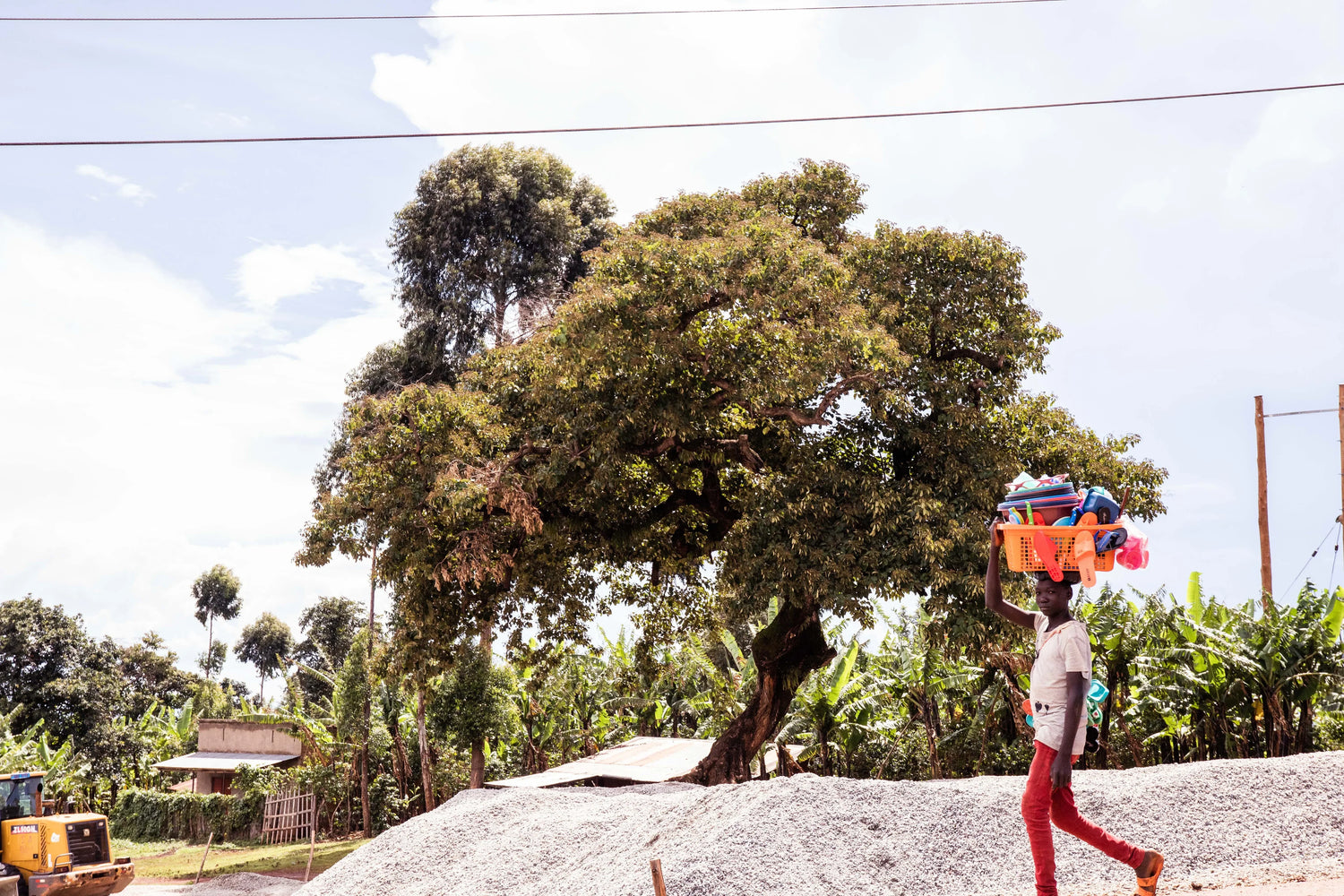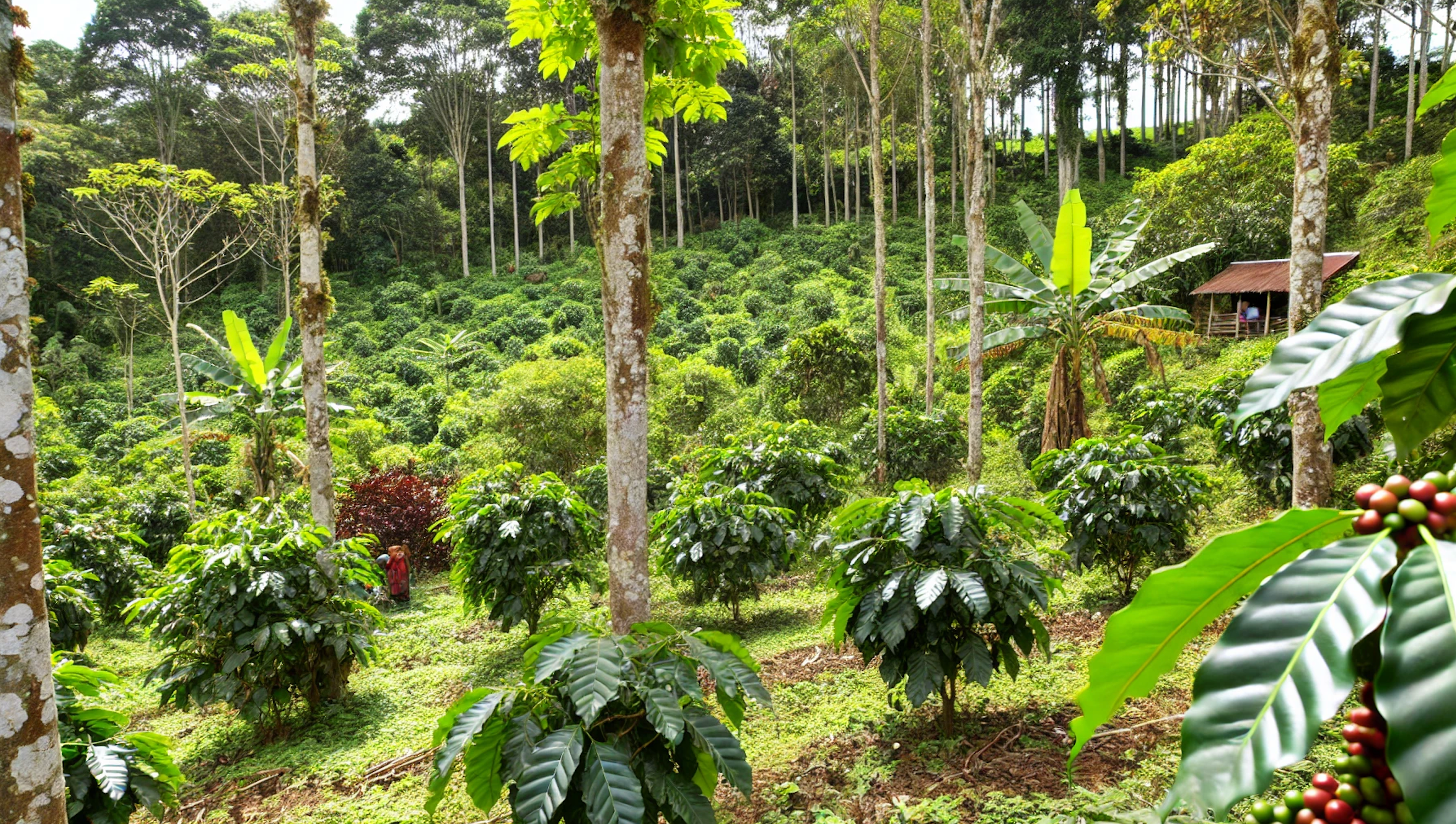If you’re passionate about coffee and its impact on the world, you might be wondering how it's possible to make a positive difference. How can we ensure that the coffee we drink is sourced ethically, grown sustainably, and benefits the communities involved? Furthermore, how can we measure and communicate the impact to customers and other stakeholders?
The Theory of Change (ToC) is one way to answer these questions - a systematic approach to understand how and why change occurs. Let us explain what a ToC is and how it works in this blog post. How can it help you to achieve your impact goals in the coffee industry. We will also provide examples from the coffee sector.
What is a Theory of Change?
A Theory of Change is a visual or narrative framework that outlines the steps required to achieve a particular goal or impact and shows the causalities between inputs, activities, outcomes, and impact. It answers the question: “How do we get from where we are to where we want to be?”
If one is looking to plan, implement, and evaluate coffee-related initiatives, a ToC is a viable tool. It can help identify assumptions, test hypotheses, and collect evidence to support claims. It also functions as a support to communicate visions and strategies to your team, partners, and customers.
Theory of Change is based on the premise that change is not a linear or predictable process, but rather a dynamic and context-specific one that involves multiple actors, factors, and interactions. It aims to provide a comprehensive and coherent picture of how and why change happens. Over and beyond it makes clear what role an intervention plays in contributing to that change.
Emerging in evaluation as a way to assess the effectiveness of complex interventions, ToC has been widely adopted and adapted by various fields and sectors, such as international development, social justice, education, and health.
Components of a Theory of Change
A Theory of Change typically comprises several key components:
-
Inputs and Resources: These are available to you. Examples are human resources and partnerships, or financial support.
-
Activities or Interventions: The actions taken to evoke change. Activities are e.g. training, research, service delivery, advocacy.
-
Outputs: Your activities/interventions direct results. E.g. products, events, publications, services.
-
Outcomes: Short- to medium-term changes based on the outputs mentioned above. Typical outcomes are changes in skills, attitudes, knowledge, practices, behaviour, policies, etc.
-
Impact: The ultimate goal. Long-term changes based on the outcomes. Impact can include changes in social, economic, environmental, or health conditions.
Developing a Theory of Change
Creating a Theory of Change involves a structured process:
-
Stakeholder engagement: It's important to identify and involve relevant stakeholder. They have an interest and are able to influence the desired outcome through interventions. Stakeholder engagement is crucial to ensure validity, relevance, and ownership of the ToC. Classic stakeholders are funders, partners, researchers, policymakers, beneficiaries and implementers.
-
Identifying the desired outcome: The desired outcome should reflect the needs of stakeholders and should be specific, measurable, achievable, relevant, and time-bound (SMART goals). Here it is central to define the long-term goal (impact) which the intervention aims to achieve.
-
Developing a logic model: This model should capture all key components of the ToC. It usually involves a visual representation showing the relationships between inputs, activities, outputs, outcomes, and impact. It can also take various forms, such as a diagram or a matrix etc.
-
Identifying assumptions: These are based on evidence, theory, experience, and intuition. They have to be tested and validated throughout the intervention. Identifying assumptions ultimately means making the underlying beliefs and hypotheses explicit and describing how and why change will occur.
-
Collecting data and evidence: Data and evidence is provided by various sources like surveys, interviews, observations, focus groups, experiments, or literature reviews etc. It should be collected throughout different stages in the intervention cycle and from different perspectives. Bottom line, this is about gathering information to validate or falsify the Theory of Change.
-
Revising and refining: This involves updating and improving the ToC based on new insights and data. Revising and refining is an ongoing and iterative process that allows for learning and adaptation.
Benefits of Theory of Change
Theory of Change has several benefits for interventions that aim to achieve complex and systemic change. Some of these benefits are:
-
ToC provides a clear and coherent framework. This simplifies planning, implementing, and evaluating interventions.
-
It can help with identifying and addressing potential challenges, or risks and unintended consequences.
-
ToC should foster collaborations, communication, and stakeholder engagement. Furthermore, it makes the ownership of interventions transparent.
-
It supports learning, innovation, and improvement of interventions.
Challenges and Limitations of Theory of Change
Theory of Change also faces some challenges and limitations that need to be considered. Some of these challenges are:
-
difficult to develop, apply, or communicate in complex and dynamic contexts/
-
can be influenced by power relations, biases, or conflicts among stakeholders/
-
can be oversimplified, overgeneralized, or overoptimistic about the potential for change.
How to Use Theory of Change in the Coffee Industry
For businesses, environmental and social impact is getting more important from day to day - not only in the world of coffee. Therefore, understanding how change happens is essential. The Theory of Change can function as a guide for producers and retailers and their efforts towards a meaningful and positive impact. It can help align sustainability efforts with business goals to make informed decisions about sourcing practices, environmental initiatives, and community engagement.
Here are some steps you can follow to use the ToC in the coffee industry:
-
Define your desired outcome: What kind of impact do you want to achieve with your initiative? E.g. do you want reduce negative environmental impact of coffee production? Do you want to improve the livelihoods of coffee farmers? Or increase awareness and appreciation of coffee consumers?
-
Identify your stakeholders: Which groups are interested in your initiative and/or outcome and do they want to influence it? How can you involve suppliers, partners, customers, competitors, regulators, etc., in your initiative?
-
Develop your logic model: You can use a flowchart, diagram, or a matrix to visualise how you want to achieve the desired outcome.
-
Collect data and evidence: How will you measure your progress and impact? What data do you need to test your logic model and support and challenge your assumptions?
-
Revise and refine: Learnings, updates and improvements. Adaptation to change.
Theory of Change in Action at Coffee Annan
To illustrate how the Theory of Change works in practice, let’s look at some in-house examples:
-
Desired outcome: Creating a more sustainable and equitable coffee supply chain, where the producers receive a fair share of the value and the consumers enjoy high-quality coffee with true social impact.
-
Activities and interventions: Roasting the coffee in the producing countries, supporting organic practices and agroforestry systems, trading directly with farmers and communities.
-
Outputs: Roasted coffee products, trainings of farmers and producers, reforestation projects in coffee regions.
-
Outcomes: Higher incomes and improved living conditions for farmers and workers, reduced negative environmental impact and carbon emissions, increased awareness of consumers.
-
The impact is to contribute to a world where every consumer can rest assured that their products are ethically sourced, contribute to equal opportunities, and foster further change our world needs.
Conclusion
The Theory of Change can be a powerful tool for coffee sustainability and impact. It helps you plan, implement, and evaluate your coffee-related initiatives in a systematic, participatory, and adaptive way. However, Theory of Change also requires careful design, application, and revision to ensure its validity, relevance, and usefulness.
If you’re interested in learning more about the Theory of Change or applying it to your own coffee-related projects or activities, feel free to contact us. We'd love to hear from you!
Thank you for reading!












